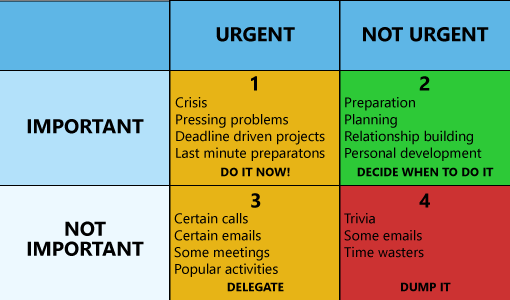Customer service is becoming a key business differentiator. Some use it very well, yet others make costly mistakes.
So, let’s take a look at these costly mistakes, with the help of experts from the contact centre industry.
Advisors Hiding Behind the Brand
Contact centre advisors blindly following processes and procedures, with no application or understanding of the specific circumstances, is one of Gerry Brown’s biggest grievances with customer service.
According to Gerry, Chief Customer Rescue Officer at The Customer Lifeguard, “Advisors should ideally be trusted and empowered to do the right thing for the customer and not just the business.”
“Of course, you have to apply some common sense here, as you cannot have an advisor giving away £10,000 a week, so you give the team some basic guidelines – but not scripts to follow.”
Gerry’s point was perhaps emphasised when a customer service member of Jet2 recently damaged the reputation of their company by asking a ten-year-old boy to prove his disability while in a mobility scooter. This incident highlights the need for advisors to be coached correctly and encouraged to apply empathy and common sense to company procedures.
As Gerry says: “Advisors need to put customers at ease with the words that they use. Whatever the situation is, there is always some emotion in it from the customer’s point of view.”
Whatever the situation is, there is always some emotion in it from the customer’s point of view.
Gerry Brown
This is why people with high emotional intelligence, who are comfortable taking ownership of conversations, often make the best advisors. Whereas advisors who hide behind phrases like “it’s company policy” or “we don’t deal with that” should be better coached and empowered.
Long Wait Times
There are basic operational things that can ruin customer service, like long wait times. So, forecasting to an 80% service level, with a wait time of 20 seconds is commonplace.
While some contact centres, like Fat Face’s, are making a conscious effort to relax service levels, research suggests that it’s essential to customer satisfaction that queue times do not exceed 90 seconds.
However, with low forecast accuracy and unexpected peaks in contact volumes, this is sometimes the case. So, focusing on forecasts and staffing levels is – of course – key.
Yet, with these long wait times, the team will often use statements that will damage customer service further. For example, an advisor may say: “I’m sorry for the wait. We are continuing to hire new people.”
In this situation, you need to have a statement that is reasonably understandable and credible – not insincere.
Gerry Brown
While the statement may not sound too bad on the face of it, Gerry Brown says: “In this situation, you need to have a statement that is reasonably understandable and credible – not insincere.”
“First acknowledge the problem, offer a sincere apology and tell the customer what you, as a company, are doing to address the issue.”
Burying Important Information
Customers shouldn’t have to search your website for minutes to find a customer service phone number. This will cause frustration before the customer has even spoken with an advisor.
As Gerry says: “I’ve even seen cases where the phone number was not easily found or was wrong, because the information provided was out of date. This is one of many operational basics that can destroy your customer service.”
Another operational basic that some companies get wrong is hiding important information in their terms and conditions or in a great block of text. Customers don’t want the extra effort, so make sure all important pieces of information are clearly signposted.
Of course this is much easier to handle if the contact centre is in charge of the website. Yet, in most cases, the marketing department is in control of the company website.
So, having close relationships where the contact centre can pass on customer feedback to the marketing department, to avoid customer dissatisfaction and lower contact volumes, can be highly beneficial.
Bombarding Customers With Emails and Messages
Customers do not enjoy being bombarded with information. Three “pop-up” proactive service emails from the same company in a day is more than enough to frustrate customers.
So, when planning to send “email blasts” to customers, check with other departments – especially marketing – that you are not sending too much to customers at once.
Don’t send promotional content to customers that have been identified, perhaps through low customer satisfaction scores, as “at-risk”.
Also, don’t send promotional content to customers that have been identified, perhaps through low customer satisfaction scores, as “at-risk”.
When they see one of these messages, the already frustrated customer will be reminded of the difficulties they’ve had with your business in the past and will be more likely to leave for good.
Not Delivering on Promises
To bring in more customers, marketing will often make promises that impact the contact centre. Yet there may be times when the business is not prepared to meet these promises.
AIG previously ran a marketing campaign entitled “The strength to be there”. However, this tagline was discontinued when the company was bailed out during the financial crisis. It’s a prime example of how the wrong messaging can damage the customer’s trust in a business.
Delivering on customer promises is often left to the contact centre. So, the contact centre needs to be prepared to meet and exceed the expectations set by marketing material and previous experiences with the company.
So, first understand what excellence looks like in your company. After all, the heights of excellence that you will have to reach will change depending on the context of your business. For example, the expectations we have of John Lewis’s contact centre would be far greater than Amazon’s.
If you have an idea but feel that you do not have enough resources to meet expectations, build a business case around ensuring customers are not left disappointed.
Also, of course, do what you can to make sure that marketing give you plenty of notice when they release a new campaign, so you can prepare the contact centre accordingly.
For ideas on this topic, read our article: Top 10 Tips for Exceeding Customer Expectations
System Failures
Advisors are often tasked with solving complex customer expectations and meeting needs using low-quality equipment and slow computer systems. This can cause headaches for the advisor and customer.

Gerry Brown
As Gerry says: “Make sure advisors have the tools that they need. There are contact centres that have great people, who have been well coached, but their systems let them down.”
“It could be any number of things are driving the system failures, but the end result is frustration on the part of the customer.”
“I’ve recently been to a contact centre where they had no record of customer contact history and didn’t have a CRM, so they couldn’t deal effectively or track any part of the customer journey.”
If advisors cannot track a customer’s journey, the customer finds themselves having to repeat information over and over again – damaging their customer experience.
Being Afraid to Have Difficult Conversations
Saying no is never easy and customers may take the no personally. While it’s not personal, it’s simply a binary business decision, advisors can react in a number of different ways which escalate the customer’s frustration. Knowing this, advisors may often be afraid of taking difficult calls.
However, according to David Cerezo, a customer service manager, advisors can be coached to say no nicely and be more confident in handling these difficult call types.
David says: “Advisors need to understand why they are delivering a ‘no’, and that is so often the problem. Without this understanding, a friction exists between the advisor and the customer that will often destroy the interaction.”
To combat this, an advisor could be coached to repeat the problem back to the customer and then show empathy to demonstrate their understanding.
David concludes: “An advisor can deliver a ‘no’ relatively comfortably if they are aware of why they are saying ‘no’ in the first place and are good at showing empathy. Say ‘no’ and then work towards the ‘yes’.”
Spreading an Adherence-Based Culture
New contact centre managers may instinctively go into a “command and control” mode, which creates a culture of adherence.
An adherence culture is one where advisors rely primarily on policies and procedures when making decisions.
An adherence culture is one where advisors rely primarily on policies and procedures when making decisions, which doesn’t sound bad on the surface, but it can harm your customer service.
If you have rules on what an advisor can and can’t say, it is likely that you have an adherence culture – meaning that advisors are discouraged from coming up with creative solutions for themselves.
However, in these times with more and more self-service and automation, advisors are dealing with more than just transactional call types. So, advisors need to use their individual problem-solving skills more than ever, as you cannot create scripts and call flows for all these new contact reasons.
So, an adherence culture is something that David Cerezo warns against, instead promoting the value of having a “safe culture”, where advisors are more engaged with the contact centre.
Discussing this safe culture, David says: “We treat mistakes as an opportunity to learn. We encourage people to reach out for support without fear of retribution and also to challenge us.”
“People don’t want to challenge because they don’t want to upset people. But we openly tell advisors to come to us with their feedback, as feedback is a gift and helps us to get better, and ensures that advisors don’t hold onto any ill feeling that damages morale.”
For more on types of culture, read our article: What Is the Best Model for Contact Centre Culture?
Measuring Productivity as Efficiency
A number of contact centres use measurements like Average Handling Time (AHT), occupancy and number of calls handled as a measure of productivity. However, this is not right as the contact centre is not a factory.
These metrics are measures of the contact centre’s efficiency and are therefore relevant to the job that the resource management team is doing, not to advisor performance. Efficiency is about reducing waste, while productivity is instead about advisor output.
Pressuring the team with efficiency-based measures will likely cause advisors to start rushing through calls and adopting behaviours that have a negative impact on service quality. It sends a message that service levels are more important than customer satisfaction.
It’s the nature of the contact centre to have wild variations in handling time. Using it as a metric for advisor performance is entirely inappropriate.
David Cerezo
David Cerezo takes particular issue with advisors being targeted against AHT, saying: “It’s the nature of the contact centre to have wild variations in handling time. Using it as a metric for advisor performance is entirely inappropriate. First Contact Resolution and Quality Scores are much better.”
For more on measuring productivity, read our article: How to Calculate Productivity in the Contact Centre
Getting Too Personal – Crossing the “Creepy Line”
In recent years, there has been a significant focus on managing customer data. This trend has arisen partly because organisations want to do more in terms of personalising service.
While this is generally a good thing, as presenting options in a way that best suits the individual customer is helpful, these organisations do run the risk of crossing the “creepy line”.
According to a BT report, less than half of us are comfortable sharing our social media profiles with our bank/supermarket/utility provider. While this will allow the company to access better information about us and therefore offer us better service, most are still uncomfortable sharing such information with large brands.
In addition, while many companies do request that the customer share their location automatically through GPS – to better personalise service – only 57% of us are open to doing so. However, this figure has risen from 45% in 2015, highlighting that we are becoming more accustomed to brands accessing our data.
Failing to Review Data and Prioritise Time
If you’re collecting data, you need to invest time and resource in reviewing it. There’s no point in collecting data if you’re not going to do anything with it.
This is according to David Cerezo, who says: “It’s good to have someone in charge of exception reports, along with coaches and the team leaders to look at the data that comes back and take learnings from it.”
However, this takes up time, which is difficult to provide. So, some contact centres evaluate personalise effectiveness by splitting up all of their tasks into the grid below.

This technique is discussed further in our article: Being Super-Busy: The Modern Excuse for Not Coaching Staff
Too often we are taken away from section two by matters in section one, and reviewing data is a section two task.
You need to take charge of your calendar and pick a time to review data and refresh your service. Fail to do this and your customer service will grow stale.
So, stop firefighting and delegate matters of high urgency and low importance to others and provide yourself the opportunity to take charge of your schedule and review data to improve service.
Not Engaging and Listening to the Team
David Cerezo says: “There is a lot that you can learn from the ‘voice of customer service’, which is important to listen to, as you can then use this to improve morale, the contact centre environment and more.”
High morale is central to good customer service. Low morale will likely impact service standards, increase attrition and absenteeism, so use employee feedback to improve in this area.
Make sure advisors feel comfortable discussing any issues with you, perhaps by establishing an open-door policy, like HomeServe’s contact centre does, and track an advisor satisfaction metric.
From listening to his advisors, David found: “They felt demotivated because there was little structure for personal development. So we put more effort into focusing on growth and development. It has now been a long time since we’ve last had to look outside the contract centre to fill a senior role.”
You can also spread advisor feedback to other areas of the organisation. The team speak to customers all the time, so marketing, the design team and creative should take an interest in what they have to say.
Thinking of Customer Feedback as an “Add-on”
Many contact centres view their Voice of the Customer (VoC) programme as something that they should do, but then they don’t use the feedback as a key business driver.
This is a mistake according to David Cerezo, who believes that contact centres should develop systems that empower the customer to give feedback and make sure they feel listened to.
In fact, David’s contact centre calls back any customer who has left a low-satisfaction score or given negative feedback, to learn the reasons why. Then, the contact centre aims to really “blow the socks off” the customer and turn a negative experience around.

David Cerezo
For example, David says: “We offer next-day delivery, but not on a Saturday and Sunday. We used to have this only in our terms and conditions, but we had a complaint from somebody who ordered on a Friday and expected a delivery on the Saturday.”
“So, we went back to the customer with a gesture of good will and added, ‘by the way, we’ve now clearly signposted on our site that we only offer next-day delivery on business days’. This really showed the customer how much we valued their feedback.”
The benefits of doing this are twofold, in that you are addressing the customer’s complaint while improving customer service for others.
Advisors Playing Tricks
While this isn’t a problem for many contact centres, sometimes advisors play tricks to reduce their time on the phone. Some of these can destroy your customer service.
For example, Dave, one of our readers, was listening back through some calls and found an advisor who was “pretending that they could not hear the caller and advising them to call back.”
“The advisor was most likely doing this because they could immediately fall back to the end of the queue and enjoy a quick break, without having ‘to go to the trouble’ of talking to the customer.”
Other tricks that some advisors play include:
- Pressing mute and pretending that there is a fault on the line
- Picking up the phone, not saying anything, and then putting it down a few seconds later
- Transferring calls to the back of the queue
Some of these tricks are difficult to spot and can really frustrate customers. However, if you get your recruitment right and build a good culture, this shouldn’t be too much of a problem.
For more examples of advisor tricks, and advice on how you can spot them, read our article: 7 Tricks That Call Centre Employees Play
Saying the Wrong Things to the Customer
There are many contact centres that are completely against scripting, believing in advisor empowerment, which is generally a great thing. However, there are certain phrases that customers really despise and it’s important for advisors to be aware of them.
For example, no customer in the history of the world has calmed down when an advisor has told them to “calm down”. Using this phrase will just anger the customer further, who is likely to already be feeling fed-up.
Other examples of phrases that customers hate to hear include:
- “You’ve got the wrong department”
- “You shouldn’t have done that”
- “As I’ve already said”
Ideally, advisors will be coached to use positive language for positive conversations, so these phrases “fall out” of the team’s vocabulary completely.
A thorough coaching programme is always the way to boost soft skills. Contact centres that have such a plan will have advisors who naturally refrain from negative references while using power words and verbs positively. These are great ways to build rapport.
Now we have taken you through a great number of things that can really damage your customer service, why not look to see how you can improve it further. For advice on how to do so, try reading:
- 5 Steps to World-Class Customer Service
- How to Inspire Contact Centre Agents to Improve Their Performance
- 12 Great Tips to Improve Call Centre Performance
Author: Robyn Coppell
Published On: 26th Sep 2018 - Last modified: 14th Aug 2025
Read more about - Customer Service Strategy, Customer Experience (CX), Customer Service, David Cerezo, Editor's Picks, Gerry Brown, Handling Customers, Service Level, Service Strategy










































